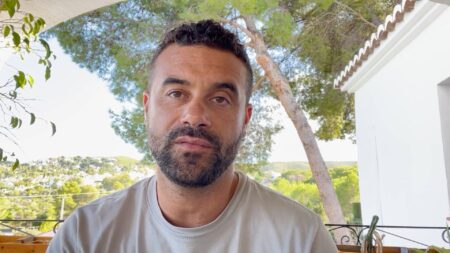Proving that the traditional and siloed application categories of ERP and CRM and HCM are simply not suited for the modern digital economy, Oracle is claiming that modern business processes require a deeply integrated suite of applications.
The monolithic and isolated pillars of CRM, ERP and HCM were fully adequate for the enterprise-centric model of the past, with companies putting top priority on their internal operations and retrofitting customer-facing apps into that superstructure. But with the rise of digital transformation and the growing understanding that in the digital world customers must be at the center of everything, those monolithic approaches simply don’t measure up.
During a keynote talk at Oracle OpenWorld this week, Oracle’s highly regarded and long-time leader of its applications business spoke compellingly about how Oracle’s addressing this new reality.
Describing how today’s world requires seamless and end-to-end processes that defy the traditional “big 3” silos, executive vice-president Steve Miranda said that in many cases, “an entire suite of applications is required to complete a single business flow.” And he used an example of what he called service logistics.
“You call a company to give a service ticket and have them repair something,” Miranda said. “What else do they need? Well, they better have a scheduling application to make sure the person is there at the right time you need them. They need an HR application because the person who shows up to do the repair at your site at the right time better have the right skillsets.
“And oh by the way, they need a supply-chain application, because should they need to do a repair, they better make sure the part they need for that repair is there at the right time with the person with the right skillset.”
In many cases, Miranda said, the engagement takes on additional vectors and becomes even more complex. Ergo, it loops in more types of applications.
“And in some cases, they may need a manufacturing system because they actually may need to build that part to have it show up on time with the right person at the right place,” Miranda said. “So a very simple business process—service logistics—but it’s only possible and enabled through a complete suite of SaaS applications.”
A short time later, Miranda revealed the enormous repercussion that can occur when a SaaS vendor like Oracle can offer that integrated suite of apps with full access to relevant data, fully integrated analytics, and end-to-end security.
“So now, how does that blend it all together, and what does it turn out to be? Our big push with transactional applications, best-in-class technology, and data, and then we apply machine learning to it. And essentially we’re transforming applications from input, accept and validation into ‘recommend’ applications,” Miranda said.
It’s precisely that power to help business customers move up the value-stack to “recommend” that is so powerful and so essential here in the early days of digital business.
Miranda’s perspective called to mind a recent advisory meeting with an industry CEO and Constellation Research founder and industry luminary Ray Wang. During that conversation, I asked: if every company’s becoming a software company, then what’s the next adventure for today’s software companies?
Wang’s answer was very close to this tweet he posted on Tuesday from Oracle OpenWorld:
MyPOV: if a SaaS or Cloud company is still selling software 10 years from now, they have failed. The goal is to sell insights and next best action#oow19 #datadrivennetworks pic.twitter.com/iWVWtj2Tvg
— R “Ray” Wang 王瑞光 #OOW19 #DataDrivenNetworks (@rwang0) September 17, 2019
That sounds exactly like the destination Miranda’s setting for Oracle—the company’s already done 600 million recommendations, he said.
“All of that, what used to be known as technical debt, no longer exists in the context of Oracle SaaS. Because not only do you get those updates automatically, but you get to leverage the benefit of all the great technology investments you just heard about in our SaaS applications,” Miranda said.
“We’ve done that across the board: in sales, doing account enrichments, doing signal alerts; in marketing, in supply chain, in finance, in HR. And because of the size of our customer base, we’re starting to see results. We’ve done over 600 million machine learning-driven recommendations in field service, over 50 million in our Commerce Cloud, over four million in our Sales Cloud, etc.”
And with ML embedded in all elements of the Oracle stack, the insights and recommendations delivered constantly improve, which is the real promise of this new approach.
“Because of the nature of machine learning and data, as we give these recommendations to our customers, and as those customers utilize the recommendation, the machine-learning algorithms get better and better, and those recommendations get better and better,” Miranda said.
“The benefit of the SaaS applications is leveraging the entirety of the technology stack in a complete suite of applications to make your business smarter through recommendations.”
RECOMMENDED READING
Oracle Will Leapfrog Amazon and Get Closer with Microsoft, Larry Ellison Says
Microsoft-Oracle Shocker: Customers Win as #1 and #6 Vendors Pair Up
Hello, IBM and Microsoft: Larry Ellison’s Big Plans for Oracle Autonomous Database
Oracle Imitates Amazon: Sells Autonomous Database via ‘Land and Expand’
Oracle Hot Takes: Workday “Not Competitive,” SAP a Time Bomb, Microsoft Valued Partner
Disclosure: at the time of this writing, Oracle was a client of Cloud Wars Media LLC.
Subscribe to the Cloud Wars Newsletter for in-depth analysis of the major cloud vendors from the perspective of business customers. It’s free, it’s exclusive, and it’s great!








